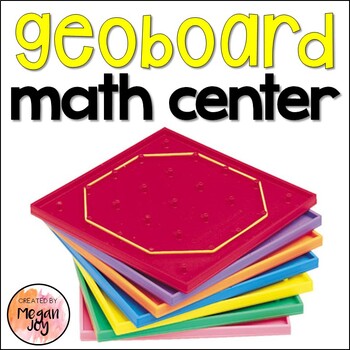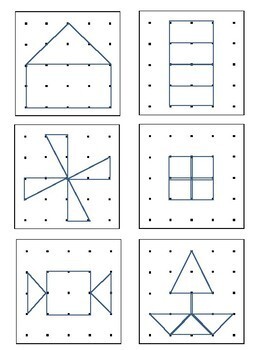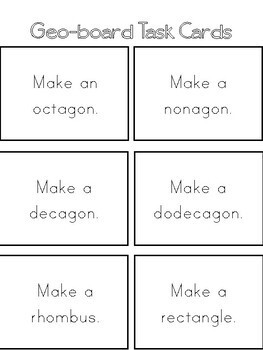Geo-board Math/Geometry Center
Joyful Learning - Megan Joy
2.4k Followers
Resource Type
Standards
CCSS1.G.A.1
CCSS1.G.A.2
CCSS2.G.A.1
CCSS3.G.A.1
Formats Included
- PDF
Pages
17 pages
Joyful Learning - Megan Joy
2.4k Followers
Also included in
- Geo-Board Math Center BundleThis bundle of resources includes Geo-Board activities for the entire school year! Geo-boards are a fun, hands-on way for students to practice geometry, shape identification, and following directions while developing fine motor skills. It works great as an independent mPrice $10.00Original Price $15.00Save $5.00
Description
GeoBoard Math Center
This hands-on math center includes 30 geo-board design cards, 42 geo-board task cards, and a recording sheet.
The task cards progress from basic to more advanced.
This is perfect as a math center or small group lesson activity!
This is part of my 2D/3D Shapes Bundle
Total Pages
17 pages
Answer Key
N/A
Teaching Duration
N/A
Report this resource to TPT
Reported resources will be reviewed by our team. Report this resource to let us know if this resource violates TPT’s content guidelines.
Standards
to see state-specific standards (only available in the US).
CCSS1.G.A.1
Distinguish between defining attributes (e.g., triangles are closed and three-sided) versus non-defining attributes (e.g., color, orientation, overall size); build and draw shapes to possess defining attributes.
CCSS1.G.A.2
Compose two-dimensional shapes (rectangles, squares, trapezoids, triangles, half-circles, and quarter-circles) or three-dimensional shapes (cubes, right rectangular prisms, right circular cones, and right circular cylinders) to create a composite shape, and compose new shapes from the composite shape.
CCSS2.G.A.1
Recognize and draw shapes having specified attributes, such as a given number of angles or a given number of equal faces. Identify triangles, quadrilaterals, pentagons, hexagons, and cubes.
CCSS3.G.A.1
Understand that shapes in different categories (e.g., rhombuses, rectangles, and others) may share attributes (e.g., having four sides), and that the shared attributes can define a larger category (e.g., quadrilaterals). Recognize rhombuses, rectangles, and squares as examples of quadrilaterals, and draw examples of quadrilaterals that do not belong to any of these subcategories.






